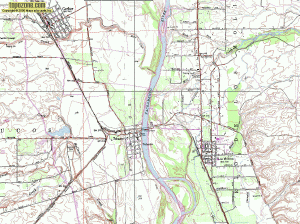Speed-Zone 1:
Sacramento - Red Bluff
In the Bay Area, even a slow train service can win customers, due to the overcrowding of highways. In the Northern California
Valley, this is nothing to hope for. If it gets connected to Sacramento by a slow train service, the author does not expect
more than a few hundred passengers per day.
A cardriver needs about 2 hours, to travel from Red Bluff to a location in Sacramento. A train passenger needs additional
time to and from the station, so the train must travel from station to station in about 1.5 hours, in order to be
competitive. On long distances, that make cardrivers pause en route, on a mountain route, or on a route with lots of bad
weather, the convenience of the train might win against the car, even at slightly slower speed, but the area between
Sacramento and Redding is not the right place for such considerations.
Average speeds of 70 mph or more allow a competitive regional service. Shasta Route trains with less stops, bypassing
settlements like Gridley, would be sped up even more.
The geometry of the track in the Northern California Valley could support almost any kind of high speeds, but the costs for
total elimination of grade crossings will outrule speeds above 125 mph. It is well possible, that upgrade work has to stop at
a limit of 110 mph for cost reasons, even with additional political pressure, as explained on the last page.

The Tehama bridge imposes one of the two geometrical speed restrictions along an otherwise straight route.
The author assumes the following conditions after an infrastructure upgrade program:
- 35-40 mph for station throat and junction in Sacramento.
- 60 mph after clearing switches and junction curves.
- 90 mph after crossing the American River.
- 125 mph after leaving the dense city environment, and all the way to the Tehama bridge, with the exception of Marysville.
- 110 mph from Tehama to Red Bluff.